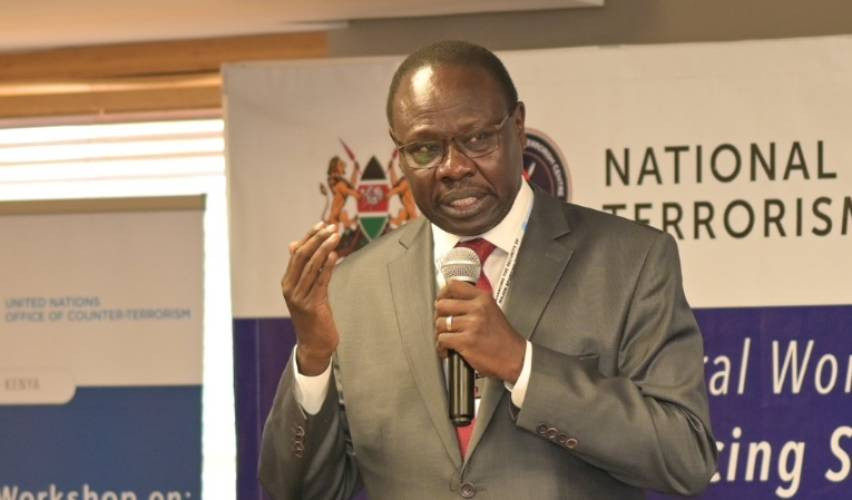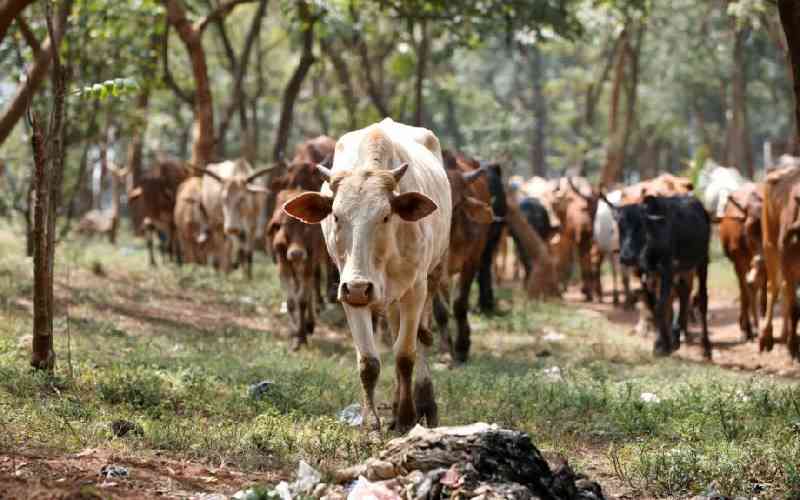Wreckage of blown up vehicles along the dusty Bargoni-Kiunga road that cuts through the Boni Forest in Lamu attest to a grueling bloody combat between security forces and Al Shabaab.
The road is arguably the most dangerous path in Kenya, according to military and police officers manning three roadblocks along the route. And we are told the vehicles were destroyed by Improvised Explosive Devices (IED) planted by Al Shabaab fighters.
Residents describe the section between Milimani and Kiunga as a minefield of IEDs sown by the insurgents and have killed several security officers since Operation Linda Boni started.
On May 31, 10 police officers were killed when an Armoured Personnel Carrier (APC) they were travelling in struck an IED at Baure.
Operation Linda Boni began in late 2015, covering 13 villages northeastern of Lamu and stretching to the southern part of Garissa County, along Kenyan border with Somalia.
A visit by Sunday Standard to Busaba, Milimani, Manga, Mararani and Kiongewe villages in Boni reveals that the operation has restored peace but military sources and villagers say the area is still volatile.
Some families that had moved from Basuba, Milimani, Manga, Mararani and Kiongwe to Bargoni, Mpeketoni and Malindi have returned to their homes.
“Anyone who goes past this point must get authorising letters from the OCPD and the military,” says a GSU officer at Milimani roadblock.
As we drove the 80km stretch into the thick forest, under the guise of assessing the hunger situation in the five villages, the road was deserted. Locals here are impoverished, lack food and clean water, following ravaging drought and famine.
Many of the Boni people are hunters and gatherers but have been banned from entering the forest because of the military operation to flush out the militants.
The villagers said the last time they received food aid was last year. Health services and learning in five primary schools in the area have also been paralysed.
Displaced pupils
For instance, at Milimani, the General Service Unit (GSU) officers have displaced pupils from Milimani Primary School and turned the institution into a police camp. School teachers Omar Bashora and Kirio Maridhili say the pupils are now forced to learn under a tree in the village.
“We have been pleading with them to set up their tents even outside the school compound and allow us to use the classrooms but they are yet to move out four years later,” says Maridhili.
Many teachers who relocated from Basuba, Mangai, Kiongwe, Mararani and Miriman primary schools are yet to return.
Stay informed. Subscribe to our newsletter
“All Standard Five to Standard Eight pupils have been transferred to Mokoe Primary School,” says Bashora, who has braved it and returned to teach in Milimani.
A man at Junction, a small village between Baragoni and Milimani, said, “We were badly off when we under Al Shabaab but is it now worse under the military.”
Lamu County Education executive Hamisi Kaviha says Milimani and Kiongwe schools are still occupied by the security personnel, but they are ready to move out.
“The situation is better compared to the recent past. The Teachers Service Commission (TSC) has posted two teachers to each school in the affected areas and we expect more as security stabilises,” says Kaviha.
Many locals, including women and children, have been killed by IED explosions.
“My 22-year-old daughter, Hau Ali, was killed in December 2015 in an explosion,” says Asha Mohamed, a resident of Milimani.
She says five people, four women and a child, died in the same explosion when their car hit a landmine near Junction.
The Boni, Sanye and Aweer, which make up the Watta community, live in the Boni Forest. Police say the forest still remains a hiding place for the Jaysh Ayman, a militant wing of Al Shabaab, since mid-2014, when they massacred residents of Mpeketoni.
The long war in the area, which was expected to be a swift and decisive defeat against Al Shabaab, has now cut off the communities from the rest of the country. Some villagers say the war has not only isolated them from the rest of the country, but the military ban on the forest has also left them destitute.
Ahmed Ijuu, a village elder in Baragoni, says Boni people rely on the forest for their daily food supplies.
“The minefields have scared way traders who used to come to sell food and other supplies. We cannot access medical services in Lamu,” says Ijuu.
Other than hunting and gathering, these families also depend on food supplies from Lamu and Mpeketoni but the road remains impassable because of the landmines and dusk-to-dawn curfew.
Along the road, carcasses of buffaloes and other wild animals that died due to lack of pasture and water also reveal the extent of drought in the area.
“If food aid will not arrive then it is just a matter of days before deaths are reported in this area,” says Omar Ali, a former councillor of Basuba ward.
Some villagers blame the military operation for their predicament but many support it, saying it has repelled Al Shabaab attacks.
The Boni is the smallest of the indigenous communities in Lamu County, with an estimated population of 3,000 people who live in the forest.
 The Standard Group Plc is a
multi-media organization with investments in media platforms spanning newspaper
print operations, television, radio broadcasting, digital and online services. The
Standard Group is recognized as a leading multi-media house in Kenya with a key
influence in matters of national and international interest.
The Standard Group Plc is a
multi-media organization with investments in media platforms spanning newspaper
print operations, television, radio broadcasting, digital and online services. The
Standard Group is recognized as a leading multi-media house in Kenya with a key
influence in matters of national and international interest.
 The Standard Group Plc is a
multi-media organization with investments in media platforms spanning newspaper
print operations, television, radio broadcasting, digital and online services. The
Standard Group is recognized as a leading multi-media house in Kenya with a key
influence in matters of national and international interest.
The Standard Group Plc is a
multi-media organization with investments in media platforms spanning newspaper
print operations, television, radio broadcasting, digital and online services. The
Standard Group is recognized as a leading multi-media house in Kenya with a key
influence in matters of national and international interest.








